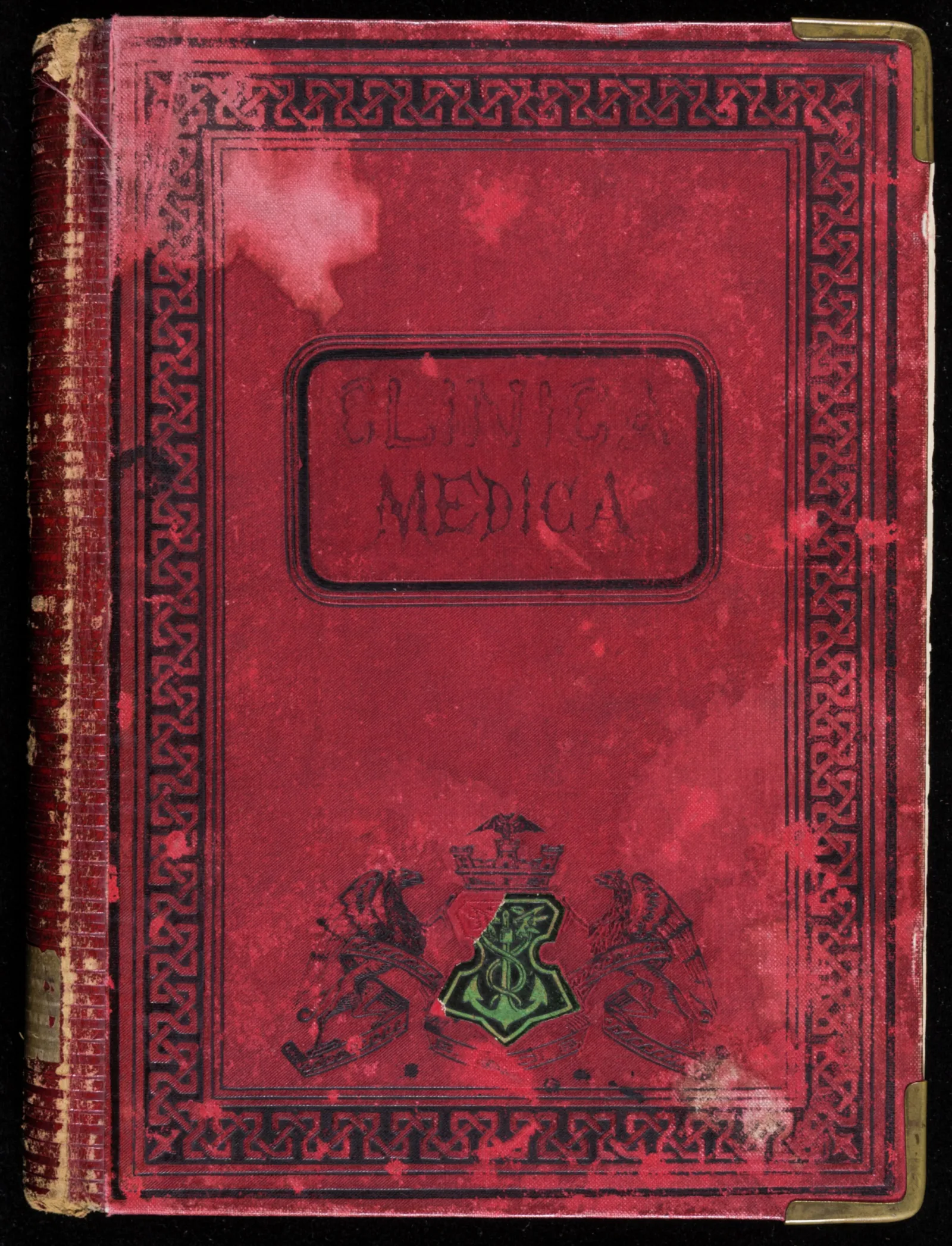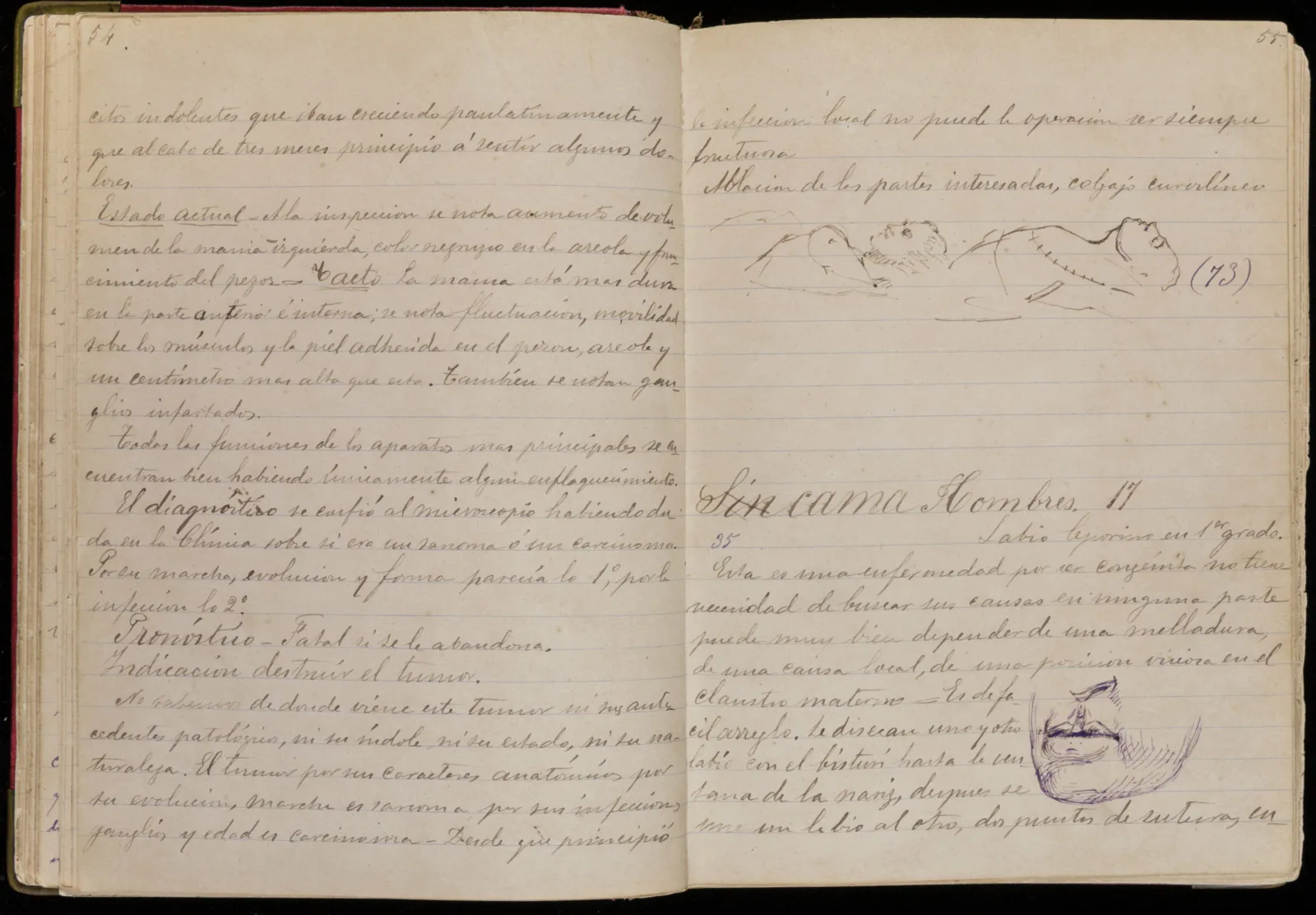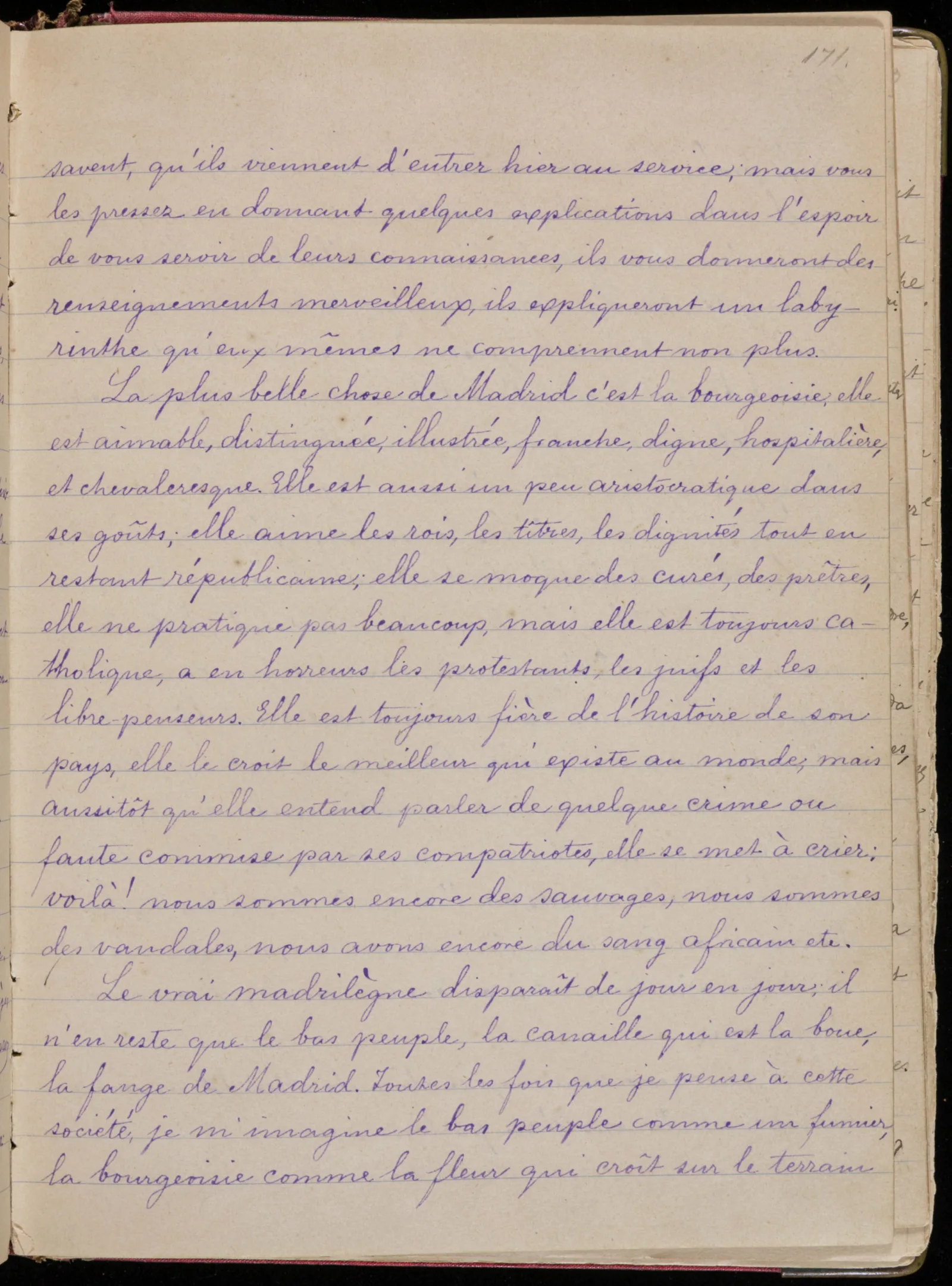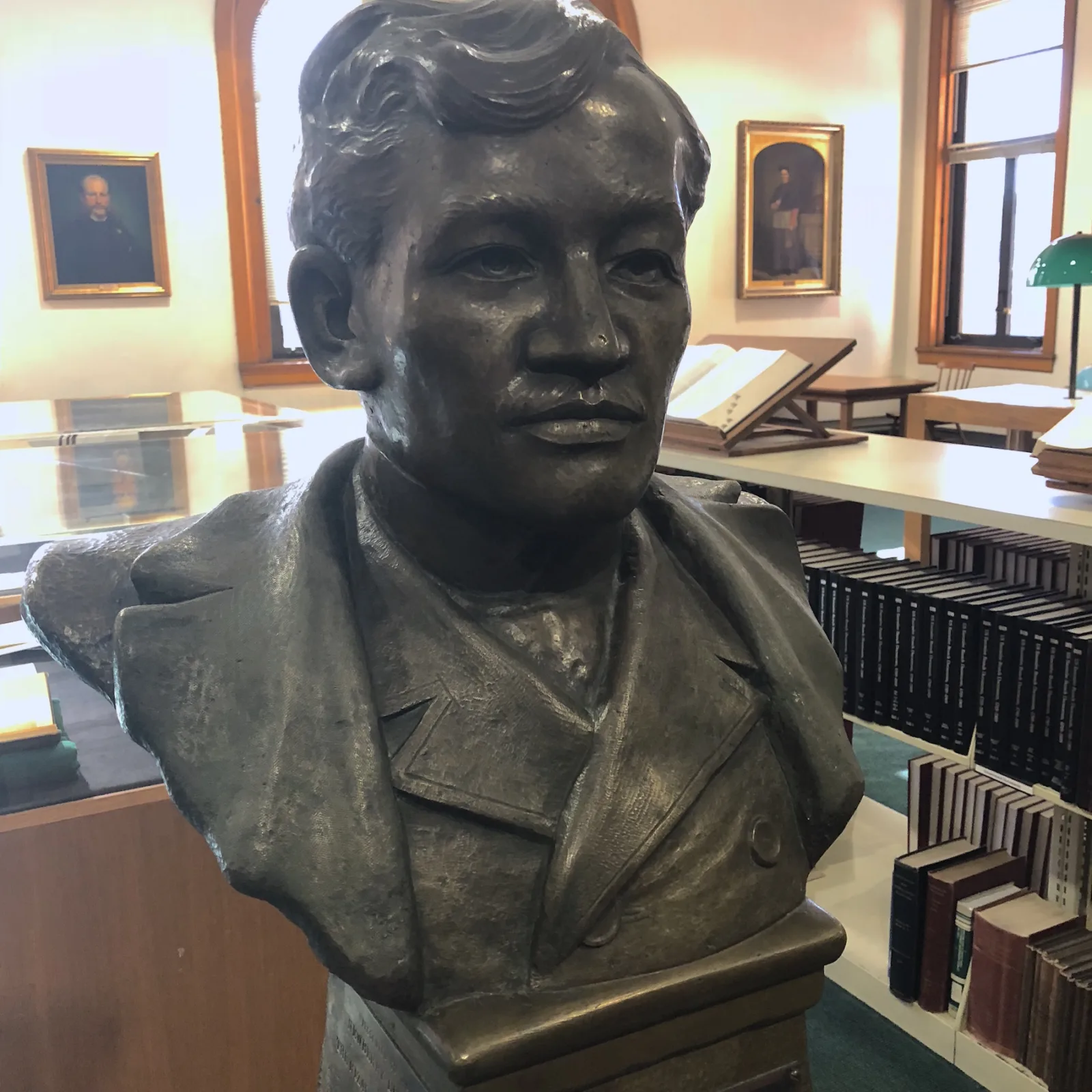Click here for a Spanish translation of this essay. Haga clic aquí para leer este ensayo en español.
View SpanishClínica médica [“Medical Clinic”] is one of the many treasures held at the Newberry Library. The Filipino author José Rizal (1861-1896) filled the notebook with notes and sketches while studying medicine and humanities in Manila, Madrid and Berlin (1881-1887). The medical manuscript is not among his canonical works, but it reveals the precocious talent of a brilliant mind. It also displays key leitmotifs of his life and corpus.
Rizal wrote extensively from his early youth onward. He published articles and poems, and edited an account from 1609 of historical events in the Philippines. Today, he is remembered mostly for Noli me tangere [“Touch Me Not”] and El filibusterismo [“The Subversive”], two novels that denounced the abuses of Spanish colonialism and the Catholic Church in the Philippines. Although Rizal always refused violence, his works influenced an uprising that led to the Philippine Revolution against Spain in 1896. These events triggered his trial and execution by the Spanish authorities, as well as his posthumous mythologization.
Approximately half of the 250 pages in Rizal’s notebook contain medical notes. From the beginning of the academic year (Madrid, October 4, 1883), Rizal’s entries record clinical histories, symptoms, diagnoses, treatments and surgical operations. His anatomical sketches have artistic merit. One can tell that he alternated medical classes with drawing lessons (see his 1884 diary). Rizal attended lectures at the Royal Academy of Fine Arts of San Fernando, a prestigious institution where Goya had taught in the 18th century. Perhaps Rizal’s interest in artistic illusionism reaffirmed his career choice: he became an ophthalmologist motivated by his mother’s sight problems.

The medical notes are followed by lists of purchased books that range from medicine (Claude Bernard) to history (Philip II of Spain, Louis XIV of France), and from Latin poetry (Horace) to French literature (Voltaire, Hugo). The 40 pages in French (translations, essays) show the importance of this language in his intellectual development. The 27 German exercises attest to his progress in a tongue he would later master.
The notebook also has drafts of his letters. Assertions such as "La plus belle chose de Madrid c’est la bourgeoisie" [“The most beautiful thing of Madrid is the bourgeoisie”] crack the stock Filipino image of a pro-independence, revolutionary Rizal.
It is indeed a widespread image. On December 30, 1927, the anniversary of his execution, the Rizal Club of Chicago donated a bust to the Newberry, which today is preserved in its third-floor reference center. The Report of the Trustees, describing the gift, affirms that “the national hero” was shot because of “his active efforts to bring about Philippine independence.”
This statement is often made. However, Rizal did no such thing. In fact, on December 15, 1896, he wrote a manifesto to repudiate the Philippine Revolution.
A year earlier, during the Cuban War of Independence, Rizal had applied to enroll as a physician in the Spanish army. Although his main incentive was to examine the casualties caused by lack of medical attention, the decision also reveals, if not his loyalty to Spain, his lack of any deep commitment to revolutionary causes.

Beyond this unfulfilled experience (he was arrested en route to Cuba), Rizal’s only military actions were the sketches of parapets and palisades in his medical notebook. The accompanying text on fortifications is a transcription from the Encyclopædia Britannica, perhaps copied to learn English. The historical record does not match the nationalist mythologization to which Rizal has been subjected.
During his lifetime, Rizal’s relationship with Spain was complicated, but posthumously he became the emblematic victim of Spanish repression. When the U.S. took over the Philippines in 1898, it was in its interest to style Spain as a backward empire that had been replaced for the betterment of the archipelago. Rizal, who was dead before the American occupation, could serve this political purpose. Thus, the new colonial administration promoted his monumentalization. In a 1901 speech, William Howard Taft, then-President of the Philippine Commission, said: “We believe, and I hope believe justly, that under the sovereignty of the United States the Filipino people can acquire all those liberties which Rizal prized” (emphasis added: we can almost hear the doubtfulness in his voice).

On December 30, 1969, the Filipino historian Renato Constantino gave a lecture entitled “Veneration without Understanding” (see Ayer 4S 16). He argued that the choice of Rizal as a national hero had enabled the U.S. to direct Filipino animosity against Spain, while implementing a second colonization.
In this respect, the last draft letter of Rizal’s notebook (Berlin, March 5, 1887) contains statements of which the American authorities would have approved. Rizal explains he wrote Noli me tangere to rebut the “calomnies que pendant des siècles on a entassées sur nous et notre pays” [“slander that for centuries has been piled on our country and us”]. For instance, the novel decries the racist violence of a prominent Spanish friar and historian. (See Gaspar de San Agustín’s 1720 letter concerning “los indios naturales de estas islas Filipinas” [“the natives of these Philippine islands.”])
Rizal did not frame the problems caused by colonialism as bad contemporary governance, but rather as endemic to Spanish control since early modernity. It is no wonder that Rizal proved foundational to Benedict Anderson’s conceptualization of the nation as an imagined community. Unlike contemporaries such as Isabelo de los Reyes, who saw only his birth region of Ilocos in the Philippines as his fatherland, Rizal deemed himself and his Filipino readers members of a broader community, encompassing the whole archipelago.
Rizal’s political canonization worked for nation-building purposes, but it distorted and diminished a complex figure with multiple facets: the polymath who mastered sciences and humanities, as evidenced by his notebook; the polyglot who kept a correspondence in five languages (Tagalog, Spanish, German, French and English), a sample of which can be seen at the Newberry; the visionary who anticipated in El filibusterismo a revolution he would not endorse; or, more disturbingly, the inconvenient victim, executed as a traitor and revered as a hero, without being either one or the other.
About the Author
Luis Castellví Laukamp received his PhD at the University of Cambridge in 2017, funded by the Modern Humanities Research Association. Luis would like to thank Professor Adam Lifshey for his comments on earlier versions of this essay.
